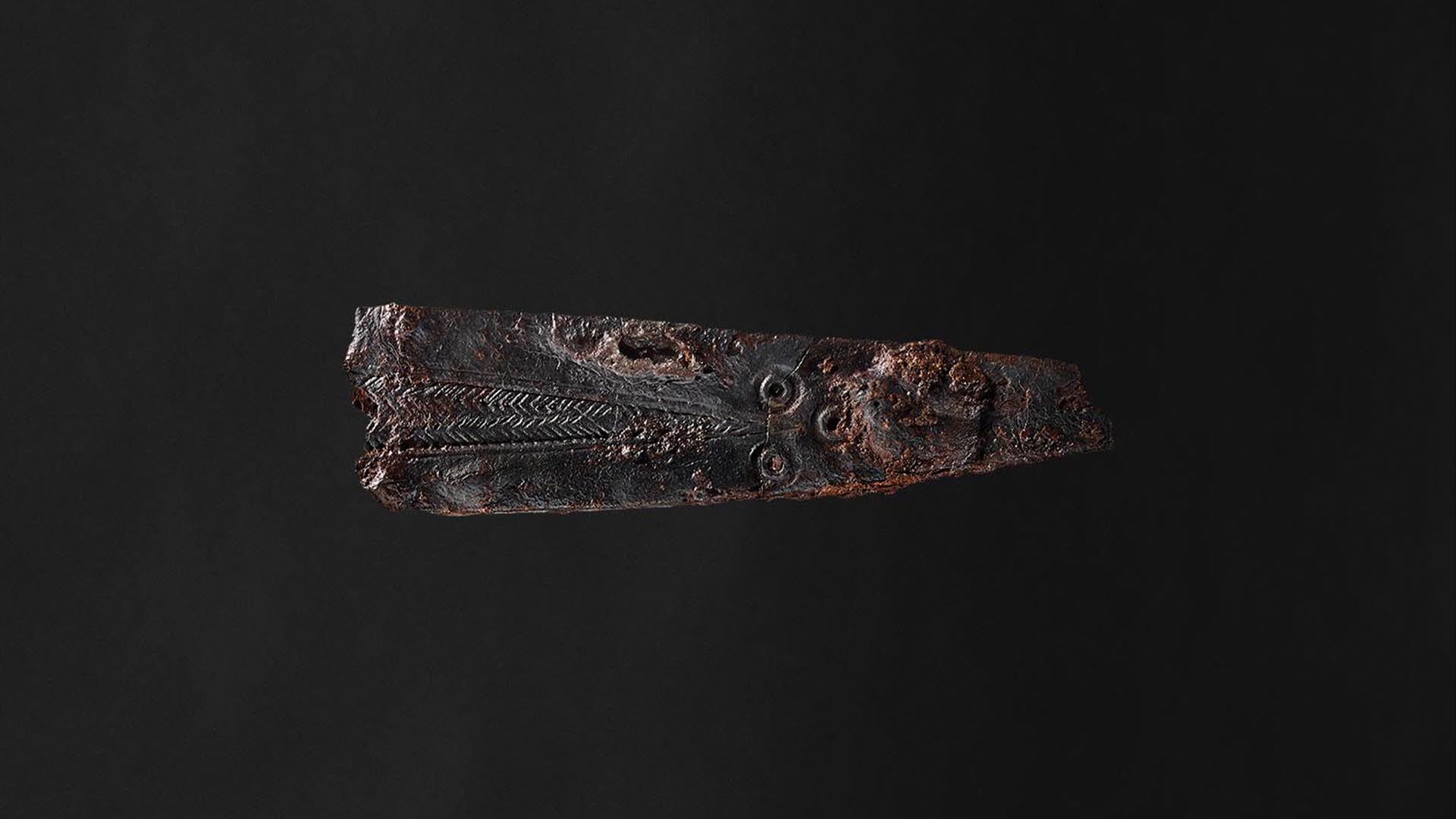Denmark's oldest runes inscribed on ancient knife
Researchers say the runic letters may spell "little sword," which could have been the name of the knife's owner or the knife itself.

Archaeologists in Denmark have discovered runic letters inscribed on a knife blade dating back nearly 2,000 years, making them some of the oldest runes ever found in the country.
The 3-inch (8 centimeters) iron blade was found in an ancient grave near the city of Odense on the central island of Funen in 2021 and since then has been stored at the Odense Museum. But curators only recently made out the inscription.
Five runes inscribed on the blade spell the word "hirila," which may mean "little sword" in the language spoken by the Iron Age people who inhabited the region from about 500 B.C to A.D 400.
The runes themselves seem to be a form of the "Elder Futhark" script, which was used between the second and 10th centuries, said Jakob Bonde, a curator at the Odense Museum who made the discovery of the runes.
"Little sword" on the knife blade could refer to the knife itself or to its owner, Bonde told Live Science.
Related: World's oldest runestone may contain the earliest example of writing in Scandinavia
And while little is known about the owner of the knife, the fact that they could read and write at all marked them as a high-status member of society, he said.
Get the world’s most fascinating discoveries delivered straight to your inbox.
"A runic inscription is like finding a message from the distant past," Bonde said in a statement. "It almost feels possible to hear their voices speaking."
Experts hope the inscription will shed light on the early use of runes themselves and the ancient language they represented.
Ancient grave
Bonde said the knife was found in a grave at an archaeological site east of Odense in November 2021 and had been stored in the museum's archive. A few months ago, while cleaning the knife, the museum's conservators noticed that it had an ornamental design on one side. The blade was cleaned further to reveal more of the design, and that's when Bonde noticed the runes on the other side.
He said the blade had been interred as a "grave good." A pottery jar with three bronze brooches was found in the grave above it, and their style indicated the grave was from about A.D. 150.
The runes have now been recognized as some of the oldest ever found in Denmark. The only others of the same age were discovered in 1865 on a bone comb from an archaeological site a few miles away. The runes on the comb seem to spell "harja," which could simply mean "comb" or the name of the person who owned it, Bonde said.
Runic alphabet
Runes were used throughout Northern Europe for more than 1,000 years to write inscriptions in Germanic languages.
Some of the earliest are from Norway. Later Germanic peoples, like the Anglo-Saxons in Britain, had their own version, while some of the most famous are on Denmark's Jelling Stones from the 10th century. They are especially associated with the Vikings, Norse people who lived in Scandinavia between the eighth and eleventh centuries.
After the Norse became Christians, however, they preferred to write with the Roman alphabet, and runes were no longer used.
One feature of runes is their angular letters, which could be easily carved into stone, bone or metal. But experts note that the use of such angular letters was also a feature of many other early alphabets, and it's thought that the runic alphabet may have developed from other scripts, such as Raetic and Old Latin.
Bonde said the ornamental design on the other side of the blade from the runes may have mimicked Roman designs and that the people who lived on Funen at that time were heavily influenced by the Romans in lands farther south.
Tom Metcalfe is a freelance journalist and regular Live Science contributor who is based in London in the United Kingdom. Tom writes mainly about science, space, archaeology, the Earth and the oceans. He has also written for the BBC, NBC News, National Geographic, Scientific American, Air & Space, and many others.




